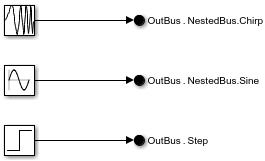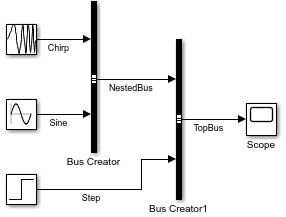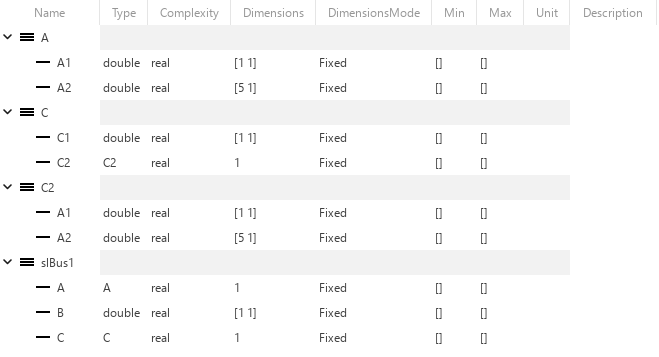Simulink.Bus.createObject
Create Simulink.Bus objects from blocks or MATLAB
structures
Syntax
Description
busInfo = Simulink.Bus.createObject(mdl,busSource)Simulink.Bus objects for the buses specified by
busSource in the model specified by
mdl. The function returns information about the created
objects.
When the model uses a data dictionary, this function creates the objects in the data dictionary. Otherwise, this function creates the objects in the base workspace.
busInfo = Simulink.Bus.createObject(S)Simulink.Bus objects from the structure specified by
S. The structure can contain MATLAB®
timeseries, MATLAB
timetable, and
matlab.io.datastore.SimulationDatastore objects. The
structure can be a numeric structure.
The function creates the objects in the base workspace.
busInfo = Simulink.Bus.createObject(___,file,fileFormat)fileFormat is "object", saves the
Simulink.Bus object definitions using arrays. The
"object" format makes the function easier to read. The
default for fileFormat is "cell", which uses
cell arrays and is more compact.
busInfo = Simulink.Bus.createObject(S,file,fileFormat,scope)Simulink.Bus objects in the data dictionary specified
by scope.




